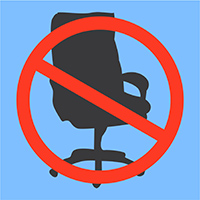Podcast: Play in new window | Download | Embed
Today’s Guest
A couple of Amazon sellers told me to interview this guy so I did.
Stephen Somers joins the 53rd session of Smart Brand Marketing.
He runs a group training people on how to sell on Amazon. The thing that separates him from the pack is that he focuses on selling in markets outside of the US. His partner Robert also jumped on the call so it was a bit of a bonus for you guys.
It’s a good episode.
TOPICS DISCUSSED
- Marketplace Superheroes
- His online course
- How long people stay in his training programs
- What are some of the biggest challenges that keeps students from succeeding with Amazon
- How Stephen drives traffic to his sales pages
- Bootstrapping
- The rule of 5
- The chicken and egg problem
Enjoy!
Succeeding with Your Amazon Business
If you are doing business in Amazon, then it is understood why you are there in the first place: to sell stuff. Fortunately for you, Amazon is a platform devoted entirely to selling and has a lot of tools and perks that can help you reach your sales goals in the quickest way possible.
However, you can’t help but think that perhaps you can earn more if you just know a few good techniques to improve sales. The good news is that there is always a way to improve how you sell every imaginable product out there through Amazon. The trick lies in finding out how.
Why do People Fail in Amazon?
Don’t let the hype about businesses in Amazon fool you. They are far from the most fool-proof business concept out there despite having a rather simple layout. On the flip side, the one model that Amazon uses for businesses is something that is actually quite effective.
Simply put, Amazon uses the source and distribute model, a concept that has been existing for thousands of years, and revamps it for a more digital platform. It’s a model for business that has been used by entrepreneurs that even those that don’t know that such model exists are actually using it for their business.

So, if Amazon uses such a simple concept, why are many businesses failing in the platform? The problem lies not in the model used by Amazon but in the culture itself not just in the site but in the entire Internet.
For some weird reason, people put a distinction between an Internet business and a “real”, tangible business, treating the latter seriously and the former like it’s a side project bordering on a hobby. For a reason, many business owners online have convinced themselves that an online business requires less effort. All you have to do is “sit back” and watch as the money comes rolling in.
It’s easy to see why many with such a mentality fail in their respective markets in Amazon.
The Hard Truth: Effort Still Matters

Another contributor to such a laidback online culture is the notion that there is always a loophole in the system that you can take advantage of to earn money. Whether it comes from a self-professed “internet marketing guru” or someone who has just been in the market for mere months, almost everyone with a business in Amazon thinks that there is an exploit embedded deep within the system waiting to be discovered and used to help you earn money.
The truth of the matter is this. Even if such an exploit exists, they won’t be effective in the long run. Ask any honest lawyer out there and why they hate winning by technicalities and loopholes in the system. It’s because the moment that that rule is amended, that loophole vanishes and whatever win they got from it is going to bite them in the rear later on.
The same goes for online business. If you really want to make your Amazon business sustainable, you have to play by the rules and exert the required effort. You need to meet deadlines, address issues, communicate, establish contacts, and sell as much as you can if you want to earn money in Amazon. Its common sense to not believe the notion that Amazon will “do all the work for you”, a lie often repeated by marketing gurus out there, because how much you earn in Amazon depends greatly on the effort you will invest on it.
How to Bootstrap Your Online Business
Picture this scenario: You are about to start your own online business. The first problem you will have to encounter is funding as you can’t start a business without a sizeable amount of money.
The first course of action you will take is to find an investor to fund everything. However, what if I told you that you don’t need to have a huge amount to start your own online business. What you will need is a small but enough amount of money and a lot of ingenuity on your part.
This is what is called is called bootstrapping and pulling it off can be tricky if you don’t know how to do it. Here are some startup tips that can help you set up a business quick with a limited budget.
- 1. Stick to Where You Are Comfortable or Confident In
 Just because that market is relatively untapped does not mean that you should head on there. Going to a new market can be costly especially if you don’t know how everything works. The lack of an innate knowledge of that new industry, or general naiveté on your part, is going to be costly for you.
Just because that market is relatively untapped does not mean that you should head on there. Going to a new market can be costly especially if you don’t know how everything works. The lack of an innate knowledge of that new industry, or general naiveté on your part, is going to be costly for you.
To save money, go to markets where you have a sizeable network of connections or, at the least, have experience in. The less you have to learn new concepts, the cheaper it will be for you to start your own business.
- 2. Plan Around Your Budget, Not Your Wishes
 There’s this odd psychological quirk we have as humans where we feel “more invincible” (that’s the prettier term for the word “reckless”) the more resources we have. As a businessperson starting a business, you might be tempted to find investors who will give you enough money to start your business.
There’s this odd psychological quirk we have as humans where we feel “more invincible” (that’s the prettier term for the word “reckless”) the more resources we have. As a businessperson starting a business, you might be tempted to find investors who will give you enough money to start your business.
Once you more than enough money, however, your goals stop becoming modest and start becoming reckless. You start spending on things that could wait until your business has established itself and you lose control over your expenditures.
As such, it is best that form your plan based on the money that you have, not on what you want to have. For instance, if the startup of your business does not require a multimedia marketing campaign, then don’t put one in your plans. If your startup does not require 20 people for the staff, then don’t hire 20 people. And so on and so forth.
- 3. An Office Space Can Actually Wait
 The biggest rend today is a remote startup where your staff will operate only with computers, smartphones, and decent Internet connections. As a matter of fact, if your business is fully online, you don’t even need to set up a business space in the real world unless, of course, you want to.
The biggest rend today is a remote startup where your staff will operate only with computers, smartphones, and decent Internet connections. As a matter of fact, if your business is fully online, you don’t even need to set up a business space in the real world unless, of course, you want to.
The reason for this is simple. An office space costs money up front, will require additional equipment to run properly, staffing, training, and travel expenses, utilities, and maintenance expenses. If you go fully online, all of those expenses can become unnecessary.
Regardless if you want to set up an office space or not, the point is that you don’t have to have one the moment that you start the business. It’s an expenditure that you can entertain the thought of later on or completely disregard depending on the business model you have.
- 4. Be Creative With Inventory Management
 Another big expenditure you will make is in the stocking and delivery of products to your clients. Fortunately, there are options right now where suppliers and distributors can directly ship things to your customers which should eliminate inventory costs on your part. All it takes is for you to negotiate with them something that is profitable for everybody.
Another big expenditure you will make is in the stocking and delivery of products to your clients. Fortunately, there are options right now where suppliers and distributors can directly ship things to your customers which should eliminate inventory costs on your part. All it takes is for you to negotiate with them something that is profitable for everybody.
One thing that boggles the mind with this strategy, however, is that many starting businessmen with limited budgets surprisingly don’t even think about using it. Whether this is out of a fear of looking like an upstart or the lack of guts, many newbie entrepreneurs spend far too much on inventory than they should and not coming up with a deal that suppliers might like. Always remember that negotiations are part of being in business. If you don’t negotiate for deals, then you’re online business is missing out on a lot.
What’s the Rule of 5?
Whenever you set up any goal for your business, you find yourself being overwhelmed with all the information available and the tasks to be done. With so many things presenting themselves as priorities for your business to take, you tend to encounter into an all-familiar pitfall: analysis paralysis.
The inability to do something because there’s just too many things to do has plagued a lot of business owners in the past and it doesn’t care if you are experienced with your market or not. If you don’t know where to begin for your business, you can’t do anything else from that point on.
So, how does one achieve their goals one by one? This is where the Rule of Five comes into play. To understand how the rule works, picture the entire plot of The Shawshank Redemption. The main character had to do five seemingly unrelated tasks every day: go for a walk every morning on the prison courtyard, shine the warden’s shoes, fill out paperwork, run various errands, and, of course, chip away at that wall.

It might have took him more than a decade but doing the same five things over and over eventually helped him reach that pipe leading to an outside world where a new identity and loads of money funneled right under the warden’s nose were waiting for him.
The same goes with your business. If you can commit to achieving 5 objectives a day at the very least, eventually you will reach several of the goals that you have set for your business. For instance, if you want to reach your marketing goals, you can do a cold call, read a marketing book, updating your website’s information, email new prospects, or set up a meeting with your marketing staff.
These activities might look insignificant compared to your larger goals but each achievement you make will eventually add up until you reach the goals you have set for the business. It would also help if you can record your achievements on a task sheet so you have something to review later on.
What Makes a Great Marketplace?
We are all looking for a marketplace that is sustainable. After all, we all want to be part of something that keeps on growing and earning us money in return. So what makes a marketplace ideal for you? The answer will be different from person to person but they all possess certain qualities like:
- A Specific Target
 A smart market does not actually take a shotgun approach right from the start where it focuses on more than several segments. Instead, it pinpoints to very specific niches and then slowly build their presence from there. Think of it as something like a restaurant franchise where the owner has to master one market right before moving into other areas.
A smart market does not actually take a shotgun approach right from the start where it focuses on more than several segments. Instead, it pinpoints to very specific niches and then slowly build their presence from there. Think of it as something like a restaurant franchise where the owner has to master one market right before moving into other areas. - Superior User Experience
 The key word here is “optimization”. In this day and age where everything is mobile, connected, and digital, a marketplace should allow for customers to access the information they need, complete transactions via an uncluttered interface, and monitor the performance of certain commodities in real time.
The key word here is “optimization”. In this day and age where everything is mobile, connected, and digital, a marketplace should allow for customers to access the information they need, complete transactions via an uncluttered interface, and monitor the performance of certain commodities in real time.
It also helps if the market place tends to keep up with current technologies as quickly as it can. The less everything feels old school, the more people will do their business there.
- Product/Service Specialization
 The best marketplaces out there actually do something better than most: stand out. They do this through offering something unique whether through the products being sold or the way everything flows from one point to another.
The best marketplaces out there actually do something better than most: stand out. They do this through offering something unique whether through the products being sold or the way everything flows from one point to another.
It’s hard to pinpoint why but people, especially younger demographics, flock to markets that offer something unique for them. And always remember that marketplaces that do have thriving communities tend to last longer than those that don’t. New markets like ride sharing and cryptocurrencies are prime examples of this and those that did venture here during their early years are reaping tons of benefits right now.
The Bottom Line
Making your business in Amazon as competitive as possible is your most direct path to succeeding in the platform. However, how you do make your business competitive depends really on its strengths and a number of factors in the market that, to an extent, are within your control.
In other words, it’s how you adapt to things that can give your business the competitive edge it needs to stay in any market.
What other ways have you tried to make yourself stand out in Amazon? Are there any challenges in the platform that you have personally encountered? Let us know in the comments down below!
THANK YOU FOR LISTENING!
To get more SBM content sent directly to your device as they become available, you can subscribe on iTunes or Stitcher!
Also, reviews on iTunes are extremely helpful and greatly appreciated! I read each and every one of them, and feel free to share your URL there so I can contact you later on and say thanks!
If you enjoyed this episode you may also love listening to:



